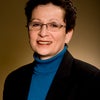Editor's Note: This post is part of a series produced by HuffPost's Girls In STEM Mentorship Program. Join the community as we discuss issues affecting women in science, technology, engineering and math.
Amelia Earhart was able to fly and set records because of the women who came before her who fought for women's rights and broke barriers of every kind. She broke additional barriers. Women today are able to stand on Amelia Earhart's shoulders and reach for their own stars, becoming astronauts and commercial airline pilots. For her many accomplishments in advancing the rights and interests of women, Amelia Earhart is one of the over 250 women who have been inducted into the National Women's Hall of Fame (www.greatwomen.org).
Are these names familiar to you? Harriet Quimby, Bessie Coleman and Anne Morrow Lindbergh. These pioneers are some of the women who also helped Amelia Earhart to break those barriers. In 1911, Harriet Quimby was the first American woman and the second woman in the world to become a licensed airline pilot. In 1921, Bessie Coleman was the first U.S. woman to win an international pilot's license. Coleman had to go to aviation school in France because no one in the U.S. would teach an African-American woman to fly. She broke gender barriers and racial barriers through her exhibition flying. After her accidental death (while in a plane), her dream of an aviation school for black pilots was realized. Anne Morrow Lindbergh was a writer, pilot and navigator who in 1930 became the first woman to gain a glider pilot's license. Later, she was the first woman to receive the National Geographic Society's Hubbard Gold Medal for her part in the development of aviation routes.
Both Coleman and Earhart knew the dangers of what they were doing: Earhart said: "Please know that I am aware of the hazards. I want to do it because I want to do it. Women must try to do things as men have tried. When they fail, their failure must be a challenge to others."
Women from the last half of the 20th century who reached for the stars might be more familiar to you. Jerrie Cobb, Sally Ride, Mae Jemison, Ellen Ochoa, and Eileen Collins are some of the women who directly benefited from Earhart's efforts. In 1960, Jerrie Cobb became the first woman military pilot to pass all of the qualification tests administered to male astronaut candidates. However, NASA wasn't yet ready to admit women into the astronaut corps. That didn't happen until 1978, when Sally Ride was selected in the first group of women astronauts. She became the first American woman to orbit the earth while aboard the Space Shuttle Challenger in 1983. Physician Mae Jemison was the first black woman astronaut in 1987. The first Hispanic woman astronaut was electrical engineer Ellen Ochoa in 1990.
In addition to Amelia Earhart, Bessie Coleman, Anne Morrow Lindbergh, Sally Ride, Mae Jemison and Eileen Collins have been inducted into the National Women's Hall of Fame.
I, too, have benefited from all of the women on whose shoulders we stand. I entered the University of Virginia in the Fall of 1972, in the third class in which women were admitted as undergraduates, under court order. I am one of the first ten women to graduate as an engineer from UVa (1976). 1972 was the first year that the percentage of women graduating nationwide with a B.S. in engineering reached ONE percent. I didn't even know a woman engineer before I became one.
I am sure that is one of the many reasons that I have devoted over 30 years of my life to encouraging women to pursue careers in science, technology, engineering, and mathematics (STEM). I am proud to have learned about the amazing women in STEM and in every other field of endeavor throughout U.S. history who have enabled women today to enjoy the rights and privileges that we have. In so many ways, I find it hard to believe that women in the U.S. have not even had the right to vote for 100 years yet. I am pleased to help write women back into history and bring alive the stories of pilots, singers, abolitionists, entrepreneurs, governors, Nobel Laureates, fashion designers, athletes, and women in every profession.
Read about these women and many hundreds more in my book Her Story: A Timeline of the Women Who Changed America (www.herstoryatimeline.com).
This post is part of a series produced by The Huffington Post to commemorate the 79th anniversary of Amelia Earhart's 1935 record-breaking solo flight, when she became the first person ever to fly from the mainland United States to Hawaii. To see all the posts in the series, click here.
